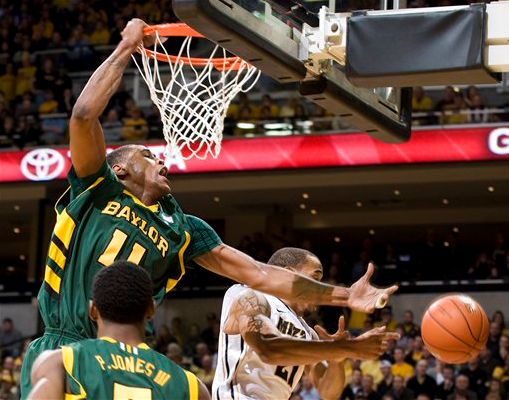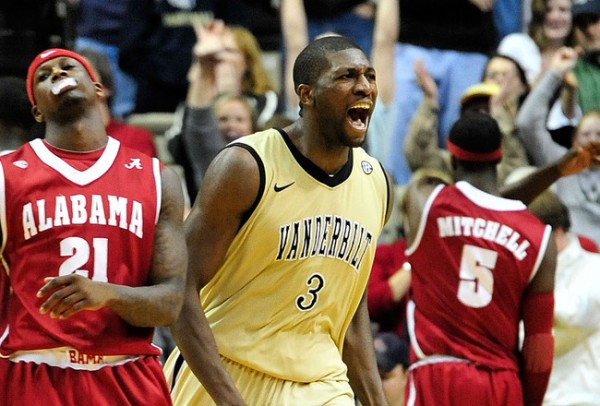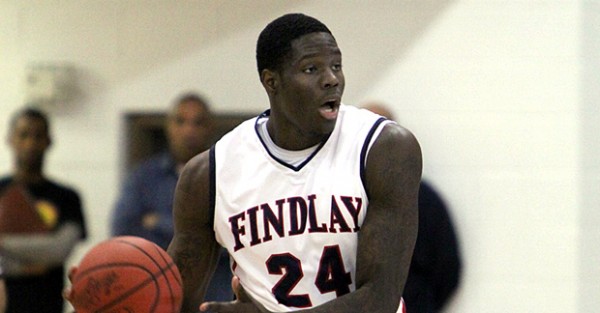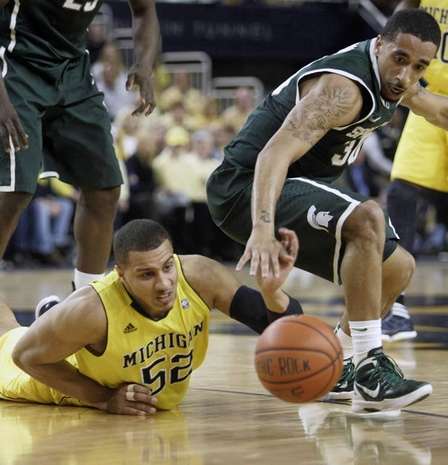Zach Hayes is an editor, contributor and bracketologist for Rush the Court.
Parity is the most overused expression in sports. Commissioners use it as a crutch to promote the competitive balance in their sport. When a small market teams upends their high-payroll counterparts to win a division championship, cries of parity rain from the masses. Any time there’s an abundance of teams still fighting for a playoff spot on the last week of the season, you’ll undoubtedly hear that parity has never been stronger.
As we geared up for another college basketball season last November, something strange happened: the word parity was nowhere to be found. We had just completed an off-season where a number of expected lottery picks – from North Carolina’s Harrison Barnes to Ohio State’s Jared Sullinger and Baylor’s Perry Jones III – eschewed NBA riches for a return to esteemed programs. Following a Final Four that featured Butler and VCU, this was supposed to be the season where order was restored, the cream rose to the top and we could identify a privileged class of elite teams at the top of the rankings. The 2008 season, where four #1 seeds reached the Final Four, acted as a good comparison.
That expected narrative has been flipped on its head. Instead of “great” teams emerging after a two-year hiatus, there’s as much turmoil as any season in recent memory. Winning on the road is seemingly unfeasible. There’s turnover atop the rankings every single week. So called mid-majors are standing toe-to-toe with storied programs, evident by a three-loss Kansas team that fell to Davidson suddenly looking like a top-five outfit. Unpredictability is alive and well.
There are countless times in sports where that clichéd phrase parity is thrown around wildly and irresponsibly. The 2011-12 college basketball season is not one of those times.

Calipari's Wildcats are back atop the rankings
1. Kentucky (19-1, 5-0)- Incredibly, they still have not dropped a game at home during the John Calipari era. Alabama played uncharacteristically well on the offensive end, punched Kentucky in the mouth and the young Wildcats responded. The true tests of this team’s mettle will be road visits to Vanderbilt (2/11), Mississippi State (2/21) and Florida (3/4). Kentucky ranks second in two-point field goal percentage and first in block percentage largely due to the presence of Anthony Davis inside, while freshman Michael Kidd-Gilchrist provides athleticism, scoring and toughness beyond his years. One concern has to be freshman point guard Marquis Teague, who has 17 assists and 16 turnovers during SEC play.
2. Syracuse (21-1, 8-1)- Dropping a road game in conference shouldn’t send the Orange faithful to the nearest ledge, but the way in which they fell to Notre Dame was concerning. The Irish followed the blueprint of controlling tempo, limiting live-ball turnovers and making timely threes, while I felt Syracuse became panicky and erratic in their offense way too quickly. The loss of Fab Melo for an undetermined amount of time deprives Syracuse of a crucial shot-blocking presence on the back line of their zone. The Orange are still far and away the best team in the Big East, on track for a number one seed and Scoop Jardine played phenomenally against Cincinnati, but make them play a half-court game and Syracuse is far from invincible.
3. Missouri (18-1, 5-1)- The oft-repeated theme regarding Missouri was that a team with size, athleticism and length in the post would capitalize on the fact the Tigers only employ two players taller than 6 feet, 8 inches. While Kansas State exposed this flaw, Baylor’s switching defenses had no answer for the most efficient offense in America. Missouri shoots a ridiculous 57% from two and ranks fourth in turnover rate, largely due to the proficiency of point guard Phil Pressey and his pick-and-roll partner Ricardo Ratliffe, who is on pace to break the all-time field goal percentage record. Missouri will be favored in every game the rest of the season, placing them on a fast track for the #1 seed in the St. Louis region.
4. Ohio State (17-3, 5-2)- My heart still tells me Ohio State will be playing on the first Monday in April and, unlike Syracuse, the Big Ten will sufficiently test them for the NCAA Tournament grind. The Buckeyes may have the best point guard (Craft) and center (Sullinger) in the country, but the departures of David Lighty and Jon Diebler has negatively affected William Buford, whose offensive rating and shooting percentages have dipped from last season. Make Craft go left, attack Thomas/Sullinger defensively, dare them to shoot threes and Ohio State is vulnerable. Two recent wins by a combined 51 points against Indiana and Nebraska leads me to believe the Brandon Paul Show in Champaign was a wakeup call.
5. Kansas (17-3, 7-0)- Nothing this season has changed my mind that Bill Self is one of the top five coaches in America. Think about it: the Jayhawks have won seven straight Big 12 titles, lost three draft picks, two more key senior contributors, two freshmen to academics, has no bench and once again sits at the top of the rankings. A major reason has been the progression of enigmatic point guard Tyshawn Taylor, who has scored 95 points on 58 percent shooting in his last four games while turning the ball over just 11 times, including zero in 34 minutes at Texas. Buoyed by Taylor and national POY frontrunner Thomas Robinson, Kansas’ starting five can compete with anyone in the nation.
6. North Carolina (16-3, 3-1)- Store this factoid in mind for your bracket in March: no team has ever won it all after losing by 30 or more points during the season as the Heels did at Florida State last Saturday. They responded well in Blacksburg, but losing Dexter Strickland to a torn ACL is an extremely costly setback. Strickland is Roy Williams’ preferred perimeter stopper, a task which must now be delegated to inexperienced sophomore Reggie Bullock. Strickland served as an efficient glue guy who simply knew his role. Carolina is still Final Four talented, though. They’re a tremendous rebounding team that rarely turns the ball over and keeps you off the free throw line.
Read the rest of this entry »



















































